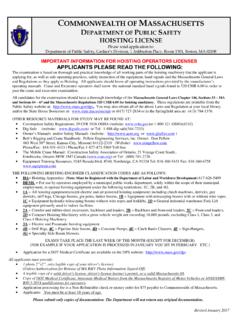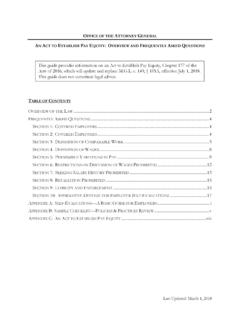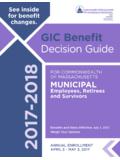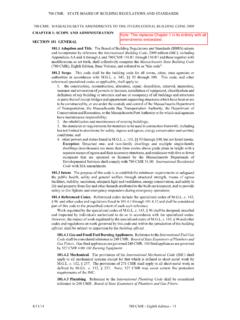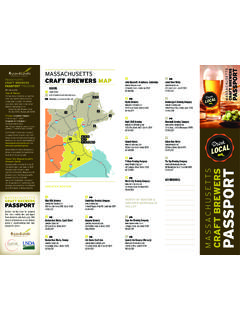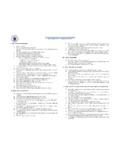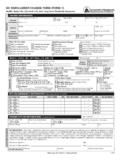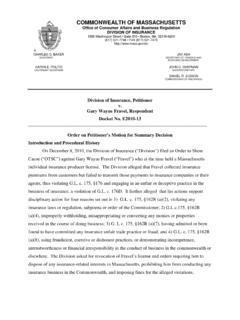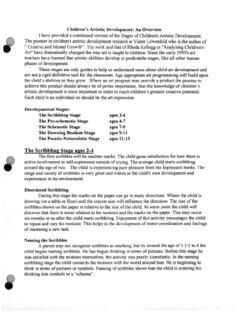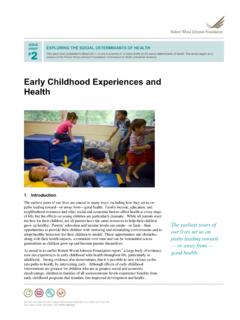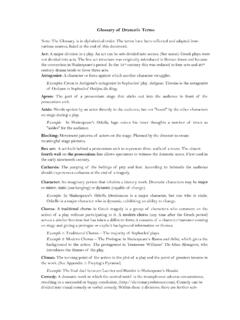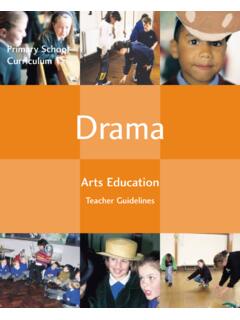Transcription of Creating a Child Care Environment for Success T
1 Creating a Child care Environment for Success The design and layout of the physical Environment ; including interior finishes, outdoor spaces, selection of equipment, and room arrangement; have a profound impact on children 's learning and behavior and on caregivers ability to do their job. An effective Environment supports children 's interaction with space, materials and people. When the Environment is designed properly, children have the freedom to move about safely while sampling a variety of curriculum activities with little intervention required by caregivers.
2 Adults can then concentrate on developing activities, observing children , and meeting their individual needs. Effective environments help children feel invited and welcome to explore and learn. Quality Child care environments have: an age-appropriate, Child centered curriculum; a variety of inviting equipment and play materials accessible to children ; sufficient and uncluttered space for active play with an additional cozy space set aside for individual and quiet play ; many colorful photographs and pictures including the children s own art work displayed at their eye level; and windows that provide natural light.
3 The motivation to interact with the Environment is in all children as an intrinsic property of life, but the quality of the interactions is dependent upon the possibilities for engagement that the Environment A Child 's development is directly linked to their ability to interact with their Environment . children develop an understanding of themselves through their interactions with events and materials outside 1 (Olds, 1979, p 91.) Olds, (1979) Designing Developmentally Optimal Classrooms for children .
4 Baltimore University Park Press. 2 (Piaget 1951) play , Dreams and Imagination in Childhood. TA ClassroomPhysicalEnvironment 20050701 Page 1 of 12 The play Space The various interactions that occur in a classroom or family Child care home are between children , staff, parents, and other adults, and among the children themselves Space, schedules, and materials designed to support these interactions have a great impact on positive school readiness outcomes for children . A quality program must provide meet the three basic needs all children have: Protecting their health & safety; Developing positive relationships.
5 And, Creating learning opportunities The arrangement of space both indoors and outdoors, the materials and activities offered to the children , the supervision and interactions (including language) that occur in the classroom/ family Child care home and the schedule of the day, including routines and activities, as well as support offered to parents and staff are all indicators of environmental quality. (ERS, March 2001) The following ideas may help with organizing curriculum and physical space: Y Arrange the physical space to give children clear messages about what is expected.
6 Y Organize routines that recognize the children 's developmental abilities. Y Create challenging play opportunities that promote acceptable ways to behave. Y Base the design on the developmental needs of the children and accommodating their individual differences. Plan a developmentally appropriate curriculum based on the needs, interests, and abilities of the children . Y Integrate curriculum across traditional domains (music, art, language arts, gross motor and fine motor play ) Y Make play and learning meaningful through relevant Child hands-on activities.
7 TA ClassroomPhysicalEnvironment 20050701 Page 2 of 12 The arrangement of the Environment plays a key role in guiding the behavior of young children . A poorly arranged physical setting actually sends messages which may trigger behavior such as aggressive play , running, or superficial interactions with toys and materials. Altering the physical space and layout of the room can eliminate such challenging behaviors. Observe children closely to determine what messages the physical Environment is sending.
8 If it appears that the space suggests undesirable behaviors to children --like running indoors--be willing to modify the arrangement of equipment and furnishings to send a different message. Include cozy and well-defined play spaces to discourage running indoors. Wide-open areas tend to encourage children to use the space for rowdy, high- speed play . Use low shelves or other borders (tape on the floor, area rugs, raised edges) to designate the size of each type of play space.
9 The size of a play area tends to indicate how many children can play there. A cozy book area, for example, should be very small and have a clear boundary if only one or two children are to play there. Other spaces, like block areas, can be larger because the nature of the play can handle a larger group. Spend time demonstrating and explaining to children how new equipment should be used in order to prevent potential injuries and set the stage for its appropriate useY Plan and develop the learning Environment so that it is full of concrete experiences.
10 Y Provide options for children . Don t expect all children to be doing the same thing at the same time. Y Encourage children to make choices from a variety of available activities. Y Arrange space so children can easily move around and among the equipment and materials. Y Allow and encourage children to move about the room. Y Use developmentally appropriate Child guidance and positive reinforcement strategies. TA ClassroomPhysicalEnvironment 20050701 Page 3 of 12 children need quiet as well as active play opportunities.
